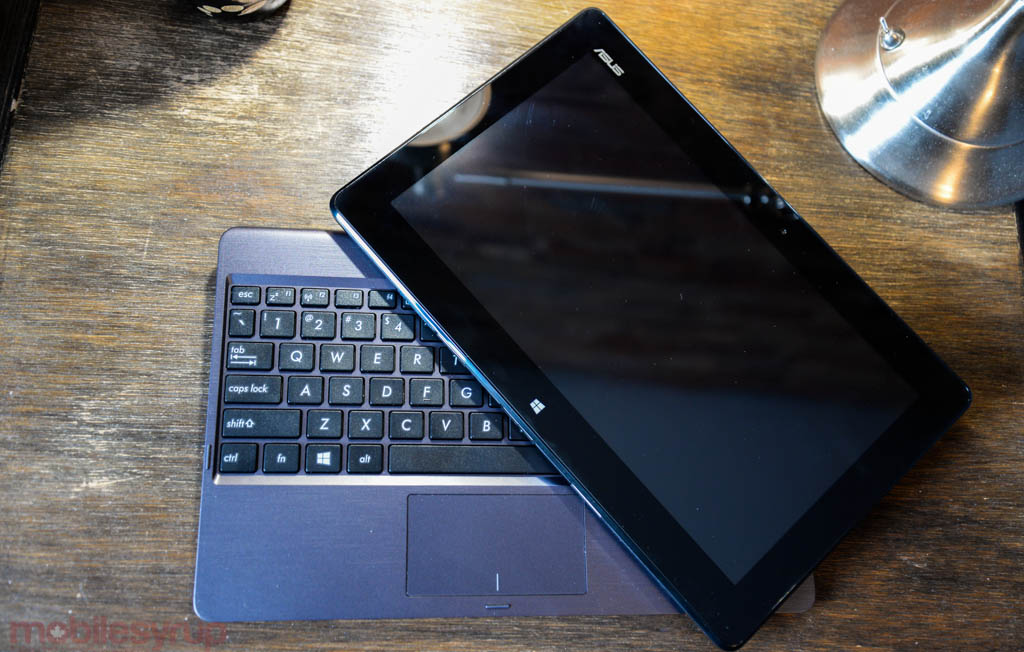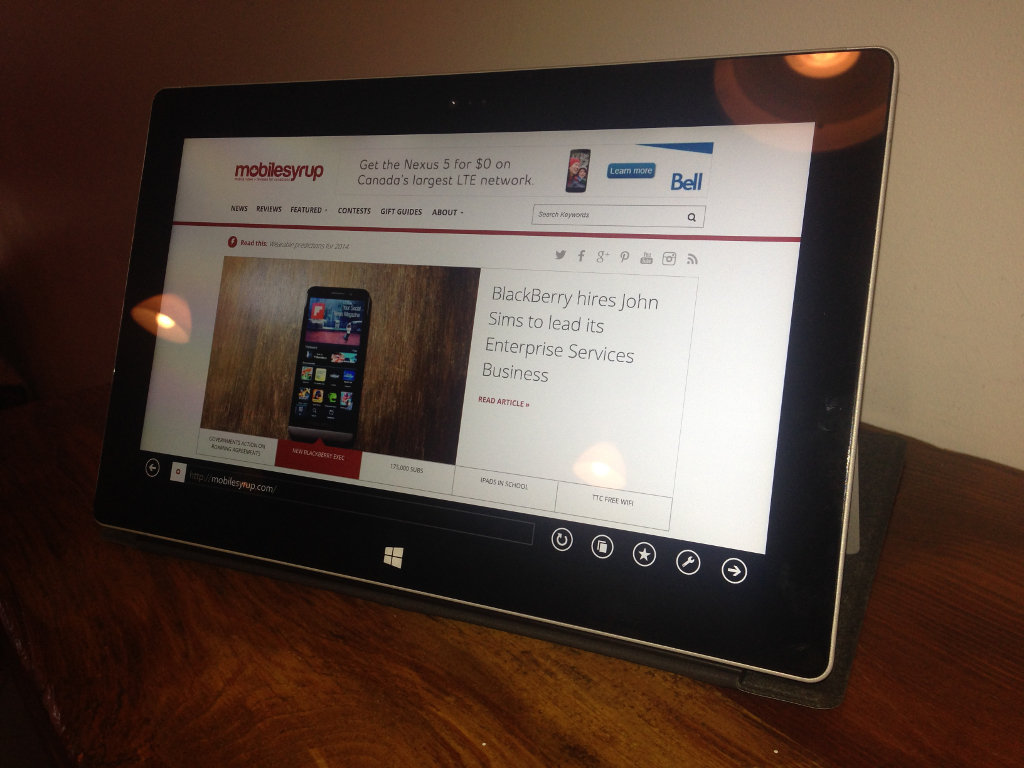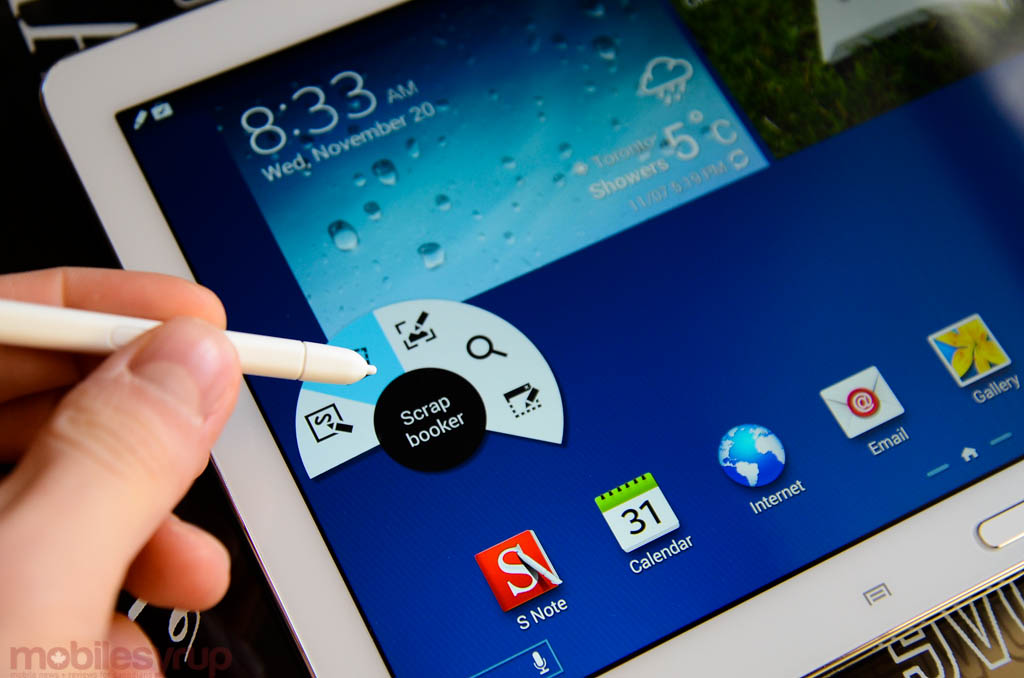
In this year’s Gift Guide, we’re going to focus on our favourite smartphones, tablets, wearables and accessories. In our second instalment, we take a look at the best tablets.
This year has been very, very good for the tablet buyer. While the iPad still dominated headlines, Android OEMs finally began taking hardware seriously just as the app ecosystem was beginning to flourish. Coincidence? Not likely. Windows 8.1 also brought a number of new form factors — or improvements to existing ones — and showed that Microsoft will not be silenced.
But which one is worth your money? We’ll break it down for you.
Tablet of the Year
iPad mini with Retina Display
It’s not a coincidence that our favourite tablet of the year is Apple’s best product since the iPhone 4. The iPad mini with Retina Display is a marvel of engineering, a stunning and powerful computer that took the, “oh, that’s an interesting idea” form factor of the original and skipped two generations of hardware to achieve performance parity with its bigger sibling.
The Retina display and A7 chip are not the showpieces here, though they certainly contribute to the overall experience. No, it’s the incredibly diverse application ecosystem, from games to reference to multimedia, that feel more natural on a 370 gram tablet that can easily be held in one hand and tucked away in a suit jacket.
Though the price may be higher than we would have liked — the 32GB WiFi model is $519 CDN — it does practically everything the iPad Air does for less money, in less space. The Air is still slightly better at some things, namely when used as a creation tool — the mini’s third-party keyboard covers tend to be a bit cramped — but we were surprised how easily the smaller screen size fits in with our workflow.
It’s not surprising that, though the hardware bests the competition in many ways — the 324ppi 2048×1536 pixel display is stunning — the app and game library is what continually brings us back to using an iOS tablet. Though Android’s ecosystem has made huge gains in the past year, it doesn’t compare to what one can take advantage of on an iPad.
Runner-Up – iPad Air
The iPad Air is another win for Apple at a time when the tablet market is saturating and its virtues unclear. Lighter, thinner and much more powerful than the 4th-generation version, the iPad Air feels as close to a true “computer” tablet as Apple’s ever made. With a larger 9.7-inch display, the Air is great for creation and productivity — just look at what’s possible with Paper + Pencil — and is probably the right choice for those less likely to take it everywhere, but can stand in for a laptop at times when a more powerful solution is not necessary.
Price, for both iPads, is still a huge factor: the iPad Air starts at $519 for the 16GB model, while the iPad mini with Retina begins at $419. Though Apple still sells the iPad 2 and OG iPad mini, their A5 chips and low-resolution displays make them less desirable than an equivalently-priced Android tablet.
Best Android Tablet
Samsung Galaxy Note 10.1 (2014 Edition)
The best Android tablet is also one of the platform’s most expensive, and unsurprisingly, its most powerful.
With some of the latest specs, arguably the best display, and S Pen-optimized applications that actually make a difference, the updated Galaxy Note 10.1 is a marvel. It helps that Samsung took pains to minimize the “squishiness” of its former Galaxy tablets, opting for a faux-leather backing that suits the slate’s aesthetic.
On the software side, we have Samsung’s new S Pen control centre, dubbed Air Command, and an overhauled, more useful implementation of Multi Window, which now allows for content sharing between dual-paned apps.
While we’re not big fans of the “app exclusive” — Samsung partnered with Twitter to offer a tablet-optimized version of the social network — the company does offer a number of perks, such as 50GB of Dropbox storage and a year of Evernote Premium, with each purchase.
At $599.99 for the 32GB standard model, the Note 10.1 costs less than the equivalent iPad Air, and offers a comparable amount of processing power, but struggles to keep up with Apple in apps and, to a lesser extent, performance.
Read our review of the Samsung Galaxy Note 10.1 (2014 Edition) for more
Runner-Up – Nexus 7 (2013)
Certainly the best value in the Android tablet category — and, to some extent, the best value in tablets, period — the new Nexus 7 takes everything that made the original amazing and makes it, well, more amazing. Gone are the slowdowns after filling the NAND memory, replaced by a vibrant 1200p display, vastly improved build quality, and a tablet operating system that is coming into its own.
Available for $229 for the 16GB version, the Nexus 7 is the small Android tablet on the market. Nothing from Samsung, Toshiba or any other OEM comes close to matching this Asus-built wonder.
Of course, for the price, the companies had to make a few compromises, and the Google/Asus team couldn’t quite reach the same battery level and camera quality of its more expensive peers. Still, for under $250, the Nexus 7 is a must-have in the 7-inch tablet category.
Read our review of the 2013 Nexus 7 for more
Best Windows Tablet

Asus Transformer Book T100
An unusual choice for best Windows tablet, but the Asus Transformer Book T100 is a return to form of sorts for the netbook. Available for less than the price of an iPad mini with Retina, and perhaps more importantly, less than the price of a Microsoft Surface 2, the T100 is a full-featured Windows 8 tablet that comes standard with a keyboard dock.
The beauty of the T100 is that it offers Surface 2-like battery life from an x86 Bay Trail chip that allows legacy Windows applications to run. It’s not the fastest convertible on the market, and the base model only comes with 2GB of RAM and 32GB of internal storage, but the T100 is more than capable of replacing a laptop in most situations.
Like the Nexus 7, the Asus-built tablet does carry its flaws up-front. The build quality isn’t great — the plastic keyboard dock flexes quite easily — and the screen 1366×768 pixel screen is disappointingly low-res, but touch response is excellent, and the keyboard itself is surprisingly usable for such a compact form factor.
Overall, though, it’s the fact that the T100 offers 10 hours of battery life from a chip that can run Photoshop if desired, and though the Windows Store is not quite up to the task of challenging iOS or Android, there are plenty of legacy apps that can fill those gaps.

Runner-up: Microsoft Surface 2
The original Surface was a sexy piece of kit that suffered from the lack of refinement typical of a first-generation product: unfinished and glitchy software; sluggish hardware performance, with keyboard accessories that weren’t quite up to snuff.
But the Surface also suffered from frustrating design decisions caused by a conflicted tablet vs. PC identity: it wasn’t comfortable in your hand but it wouldn’t rest on your lap, either; it eschewed legacy Windows app support in favour of a store without many apps. It was a tablet with a desktop mode that wasn’t touch-optimized. You appreciated the Surface for what it wanted to be, not what it was.
With the Surface 2, Microsoft has refined the execution but not solved the identity crisis. The quad-core Tegra 4 processor is zippy, the 1080p screen is beautiful, and Windows RT 8.1 runs smoothly, with more features and less glitches. It is a very sexy piece of kit. But the Surface 2 is also still a tablet designed to be propped on a desk that won’t run desktop apps. But we recommend Surface 2 because the Windows Store is filling up with great titles, and because, most of all, Microsoft will do everything it can to ensure the platform’s success for years to come. And, barring all that, it also comes with Office.
MobileSyrup may earn a commission from purchases made via our links, which helps fund the journalism we provide free on our website. These links do not influence our editorial content. Support us here.





